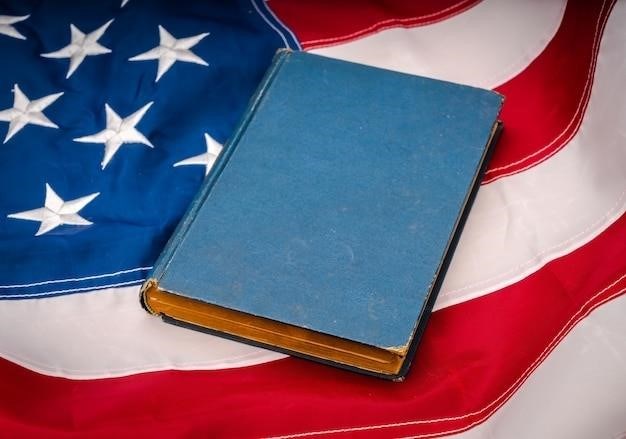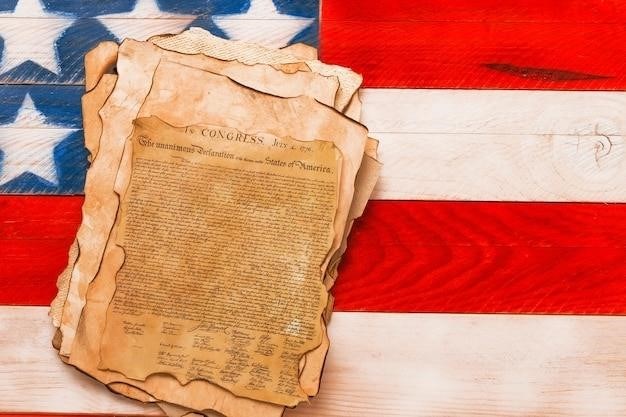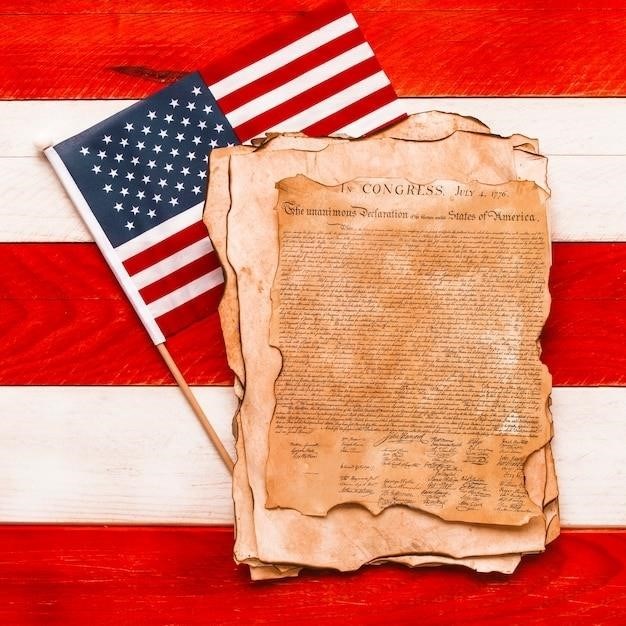prentice hall u.s. history textbook pdf
Prentice Hall US History Textbook⁚ Overview
The Prentice Hall US History textbook offers a comprehensive survey of American history, covering key events and figures. Various editions exist, including teacher editions. Online resources and support materials may be available.
Availability of PDF Versions
Finding official PDF versions of the Prentice Hall US History textbook directly from the publisher or authorized retailers can be challenging. While some sources mention the existence of PDF versions, locating readily available, legitimate downloads might prove difficult. The publisher, Pearson (formerly Prentice Hall), may offer digital access through specific learning platforms or subscriptions, but free, unauthorized PDFs are often of questionable legality and quality. Copyright restrictions significantly impact the availability of free PDF downloads. Users should exercise caution when seeking such resources, as many are likely pirated copies.
Online Resources and Alternatives
While the official Prentice Hall website and associated platforms may offer supplemental online resources for the US History textbook, the direct availability of the full textbook in PDF format is not guaranteed. Users might find alternative resources online, such as educational websites or online libraries, that provide similar historical content. However, these alternatives may not perfectly mirror the Prentice Hall textbook’s structure or content. Free online educational resources like OpenStax offer comprehensive materials covering US history, though they may differ significantly in presentation and depth from the Prentice Hall text. Always verify the credibility and accuracy of any online resource before relying on it for educational purposes.
Publisher Information and Support
Prentice Hall, now part of Savvas Learning Company, was the original publisher of the US History textbook. Contacting Savvas directly is crucial for obtaining official support, including inquiries about accessing digital versions or supplementary materials. Their website should provide contact information and resources for educators and students using their textbooks. Note that older online platforms like PHSchool.com are now defunct due to Adobe Flash’s discontinuation. Therefore, relying solely on outdated online links or resources is unreliable. For current support and access to any digital components, users should directly engage with Savvas Learning Company via their official channels.

Accessing the Textbook⁚ Methods and Challenges
Obtaining a Prentice Hall US History textbook PDF can be challenging. Official sources may be limited, and third-party resources pose copyright and legal risks. Finding legitimate access requires careful consideration.
Official Sources and Limitations
Accessing the Prentice Hall US History textbook PDF through official channels presents several limitations. The publisher, Pearson (formerly Prentice Hall), may not offer direct PDF downloads for the textbook. Their website might provide access to online resources or digital versions, but these may require subscriptions, institutional access, or specific codes. Furthermore, older editions might be unavailable digitally. Even if a digital version exists, it might be formatted for specific learning platforms, limiting accessibility. The cost of accessing official digital materials can be a significant barrier, especially for individual students. Therefore, relying solely on official sources to obtain the textbook in PDF format might prove restrictive and potentially expensive.
Third-Party Resources and Risks
Seeking the Prentice Hall US History textbook PDF from unofficial third-party sources introduces several risks. Downloading from file-sharing websites or forums exposes users to potential malware or viruses that could infect their devices. The quality of such PDFs may be compromised, with missing pages, poor image quality, or corrupted text. Furthermore, illegally obtained copies infringe copyright laws, potentially leading to legal repercussions for both the distributors and the users. The accuracy of these unofficial copies cannot be guaranteed; they might contain errors or alterations that deviate from the original text, compromising the educational value. Users must exercise caution and prioritize reputable sources to mitigate these risks and maintain academic integrity.
Copyright and Legal Considerations
Downloading or distributing unauthorized copies of the Prentice Hall US History textbook PDF is a violation of copyright law. Copyright protects the intellectual property of the authors and publishers. Unauthorized reproduction, distribution, or sharing of copyrighted material is illegal and can result in significant legal consequences, including substantial fines or lawsuits. Educational institutions and individuals should always obtain textbooks through legitimate channels, respecting the intellectual property rights of the creators. Using legally obtained materials ensures access to accurate and complete content, supporting the ethical and legal framework of education. Accessing the textbook through legitimate means protects both the user and the publisher. Remember, respecting copyright is crucial for maintaining a fair and sustainable educational ecosystem.
Content and Structure of the Textbook
The textbook likely follows a chronological structure, covering key events, figures, and movements in American history. Supplementary materials may enhance understanding.
Chronological Coverage and Key Topics
Prentice Hall’s US History textbook likely presents a chronological narrative, starting with early exploration and colonization and progressing through major historical periods. Key topics would include the American Revolution, westward expansion, the Civil War and Reconstruction, industrialization, the Progressive Era, World Wars I and II, the Cold War, the Civil Rights Movement, and contemporary American history. The depth of coverage for each period may vary depending on the specific edition and grade level. Expect significant attention given to foundational documents like the Declaration of Independence and the Constitution, along with discussions of key political figures, social movements, and economic transformations. The textbook aims to provide a balanced and comprehensive overview, though interpretations and emphases might differ between editions. Teachers often supplement the textbook with additional readings and activities to deepen student understanding.
Supplementary Materials and Resources
Depending on the edition and whether it’s a student or teacher version, the Prentice Hall US History textbook may include various supplementary materials. These could range from online access codes providing interactive exercises and quizzes to additional primary source documents or maps. Teacher editions often contain lesson plans, assessment materials, and answer keys. Some versions might offer access to digital archives containing images, videos, and audio clips related to the historical periods covered. The availability of such supplementary resources can significantly enhance the learning experience, providing students with diverse ways to engage with the material. However, access to these supplementary materials may be dependent on the purchase method and edition of the textbook itself. Always check the specific features included with your copy.
Interactive Elements and Online Components
Many Prentice Hall US History textbooks incorporate interactive elements and online components designed to enhance student engagement and understanding; These features might include online quizzes, interactive timelines, virtual tours of historical sites, and multimedia presentations. Some versions may offer access to digital archives with primary source documents, images, and videos. The availability of these interactive elements often depends on the specific edition of the textbook and whether an access code is included. These digital components can provide a more dynamic and engaging learning experience compared to a solely print-based approach. However, access to online components may be limited or require a subscription, so it’s essential to check the textbook’s specifications before purchase to ensure access to the desired interactive features. The quality and extent of these features vary across different editions.

Finding Similar Resources
Numerous alternative US history textbooks, online courses, and free educational resources offer comparable content and learning experiences to the Prentice Hall textbook.
Alternative US History Textbooks
Seeking alternatives to the Prentice Hall US History textbook? Many publishers offer comparable high school US history texts. These often cover similar chronological periods and thematic units, providing a range of pedagogical approaches and supplementary materials. Consider the specific needs of your students and learning objectives when choosing an alternative. Factors such as reading level, depth of coverage, and inclusion of primary sources should inform your decision. Some textbooks might emphasize visual learning, while others focus on textual analysis. Researching reviews and comparing table of contents can help you find the best fit. Remember to check for digital components and online resources that can complement the textbook’s core content. Exploring options from different publishers ensures a broader perspective and a variety of teaching styles. The availability of teacher editions and supplementary materials can also be a key factor in your selection process. Ultimately, the ideal textbook will align with your curriculum and effectively engage your students in learning about American history.
Online Learning Platforms and Courses
Numerous online platforms offer comprehensive US history courses, often supplementing or replacing traditional textbooks like the Prentice Hall edition. These platforms vary widely in their approach, some mirroring a traditional classroom setting with lectures and assignments, while others utilize interactive simulations and gamified learning experiences. Many platforms offer self-paced learning, allowing students to progress at their own speed and revisit material as needed. Consider factors like course structure, instructor support, and assessment methods when selecting an online course; Some platforms specialize in AP or IB level courses, while others cater to a broader range of students. The availability of digital resources, such as primary source documents and interactive maps, can significantly enhance the learning experience. Look for platforms that offer clear learning objectives and provide opportunities for feedback and interaction with instructors or peers. The cost and accessibility of these online courses should also be a major consideration, with some offering free or low-cost options. Choosing a reputable platform ensures a quality learning experience that complements or surpasses traditional textbook learning.
Free and Open Educational Resources
The digital age offers a wealth of free and open educational resources (OER) for US history, providing alternatives to commercially published textbooks like the Prentice Hall edition. These resources often include digital textbooks, interactive timelines, primary source documents, and educational videos, all accessible online at no cost. Websites like Khan Academy and numerous university archives offer extensive collections of materials, covering various periods and aspects of American history. While the quality and depth of OER can vary, many reputable organizations and institutions curate high-quality content, ensuring accuracy and pedagogical soundness. Utilizing OER can be particularly beneficial for students seeking supplementary materials or those who prefer a more flexible and customizable learning experience. However, it’s crucial to carefully evaluate the credibility and reliability of sources before incorporating them into your studies. Remember that while OER can be a valuable supplement, they may not always provide the structured curriculum and support of a traditional textbook.
